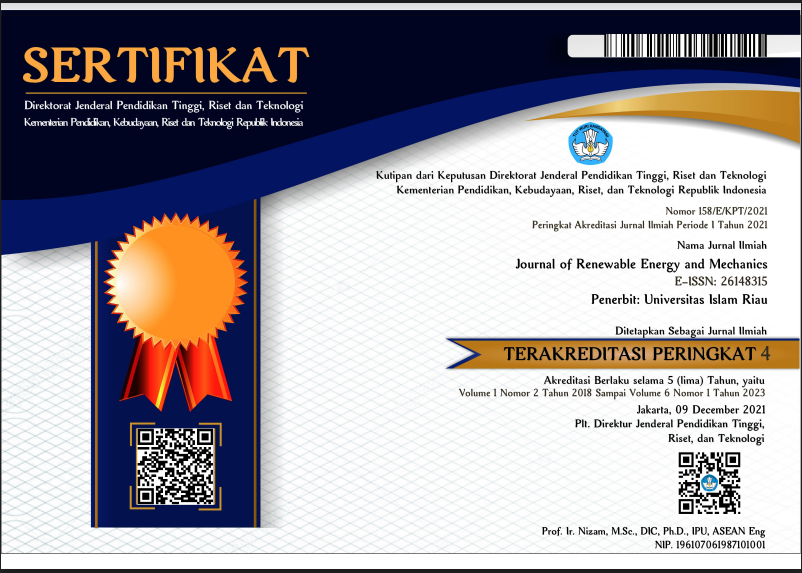ANALYSIS OF COOLING LOAD IN ROOM GK-104, INSTITUT TEKNOLOGI SUMATERA
DOI:
https://doi.org/10.25299/rem.2024.vol7.no1.16024Keywords:
cooling load analysis, refrigeration engineering, thermal comfortAbstract
The effects of global warming are very impactful in everyday life, one of which makes the air feel hot, a cooling machine is needed to be able to reduce hot air in a room. Cooling machines have become an important necessity in everyday life. The cooling machine can be maximally utilized if the heat load above it must be appropriate or below. This research was conducted to analyze the cooling load in the public lecture room 1 of the Sumatra Institute of Technology GK-104. The data required in this study are the length of the room, the width of the room, the amount of internal heat of the room, the maximum number of people in the room, and the cooling capacity of the air conditioner. For the calculation of cooling load analysis is divided into 4 parts namely occupant load, equipment load, lighting load, and transmission load. After the analysis, the value of each is obtained 2,656.68 W, 450.09 W, 3,930.62 W, 2,238.71 W. The total cooling load of a room is 9,276.114 W. For the capacity of 2 air conditioners GK-104 room is 10,040 W. It can be concluded that the cooling load of the room is still far below the cooling capacity of the air conditioner and the room can cool according to the desired temperature.













